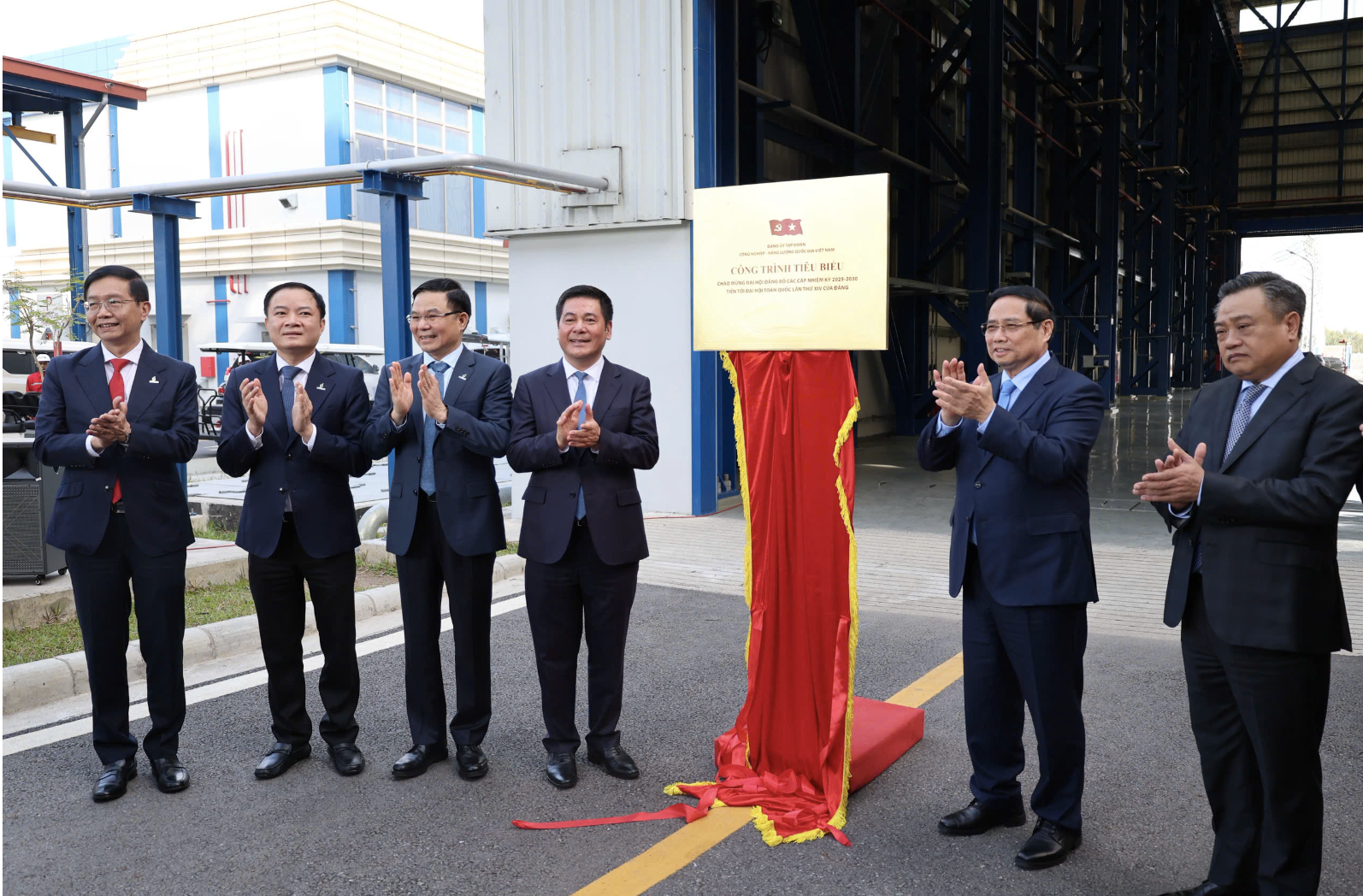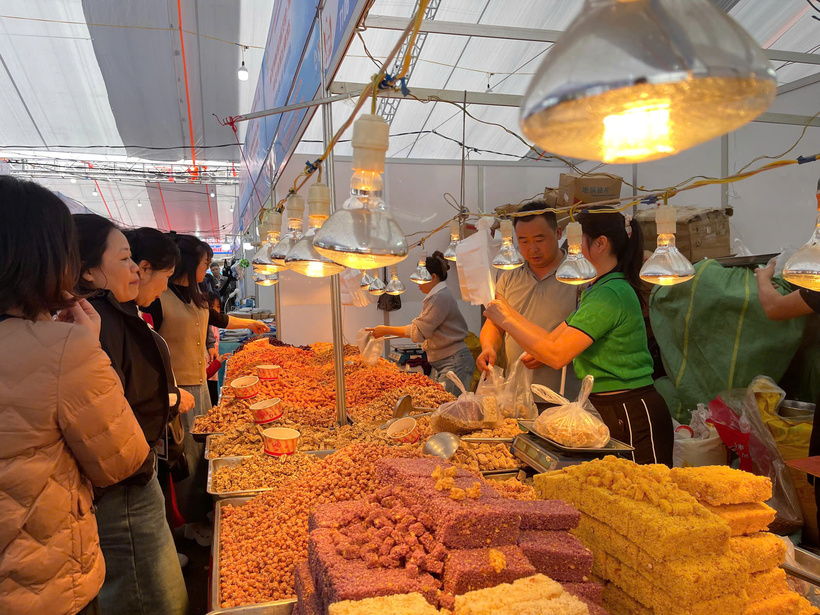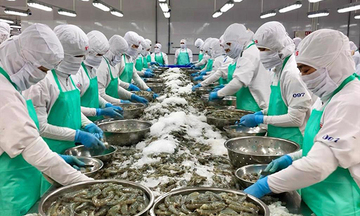
Prime Minister: Nhon Trach 3 & 4, a flagship model of Vietnam’s stature
19:05 | 23/03/2025 21:02 | 14/12/2025Industry
Highland products enter a major trading arena
The 25th edition of the Vietnam-China International Trade Fair in Lao Cai province has once again affirmed its role as the most important border-trade event in northern Vietnam. Hundreds of booths from provinces and cities across the country joined the fair, with products from ethnic-minority regions appearing in large numbers and quickly becoming the center of attention for visitors and business partners. This growing attention reflects the readiness of highland products to move into broader markets, provided they are showcased properly and presented to the right consumer groups.
Right from the opening day, the booth of the Sucova High-Tech Agricultural and Medicinal Cooperative from Lai Chau province was bustling with visitors. Its flagship products, such as cordyceps militaris and whole pupae grown using advanced technology adapted to the unique climate of the Northwestern region, drew significant interest from residents of Lao Cai and visitors from many provinces. Cooperative Director Le Van Uan said the unit had arrived at the fair on November 18 and recorded promising sales: many who sampled the products returned to buy them, showing their potential to reach wider markets with effective promotion.

Le Van Uan, Director of Sucova High-Tech Medicinal Agriculture Cooperative (Lai Chau province).
In practice, the fair is a rare opportunity for remote cooperatives with limited distribution channels to reach a large and diverse customer base. Under normal conditions, organizing large-scale sales or engaging directly with Chinese customers is far beyond the capability of most highland cooperatives. The fair therefore creates an “equalized” space where ethnic-minority products can be evaluated on the same footing as other goods.
However, a shared concern among these cooperatives remains long-term market access. According to Uan, despite positive feedback, entering the Chinese market remains challenging due to strict requirements on quarantine, quality standards, and logistics. This underscores the need for coordinated support from the Ministry of Industry and Trade and relevant agencies to help highland products move toward sustainable export markets.
The fair also showcased products deeply rooted in the cultural identity of ethnic-minority communities. The steaming rice-cake pot at the Phu Tho booth and the vibrant forest-leaf salad platter at the Quang Ngai booth created distinctive visual highlights, helping local specialties step beyond traditional craft villages.

The fair also showcases products deeply rooted in the cultural identity of ethnic-minority communities.
At the fair’s northern midland and mountainous section, the Minh Phuong Clean Food and Agricultural Processing Cooperative (Viet Tri, Phu Tho province) displayed long-standing specialties such as cassava cake, khuc cake, and fermented sour pork. Cooperative Director Nguyen Thi Minh Phuong shared that these dishes have been part of daily life in her homeland for generations, carrying unique cultural value. Yet for many years, they were consumed only within the province due to limited promotion and market access.
Participation in the fair over the past three years has gradually improved the cooperative’s sales. At this year’s Vietnam-China International Trade Fair, the “on-site steaming” model allowed visitors to watch the preparation process, creating strong consumer trust. Guests could taste the warm, soft, fragrant cassava cakes straight from the steamer. This helped many Chinese visitors appreciate the product and purchase it to take home. For a small cooperative, such feedback is an affirmation that traditional products, no matter how simple, can win over border markets when introduced properly.
From the Central Highlands, artisan Nguyen Thi Hong Yen brought a forest-leaf salad comprised of dozens of edible leaves paired with fermented dipping sauce and mountain-raised shrimp and pork. The curiosity of international tourists trying this unique flavor revealed the potential of well-developed indigenous culinary products.
Notably, booths from provinces like Quang Ngai, Phu Tho, and Lai Chau did more than selling goods; they told cultural stories, expressions of pride among ethnic-minority communities, which in turn amplified commercial value. This illustrates how the economic worth of highland specialties is inseparable from their cultural value.
Local uniqueness awakened within the fair
From a market perspective, the fair acts as a special distribution channel that highland cooperatives cannot build on their own. Beyond direct sales, the fair contributes to shaping new markets through three mechanisms.
First, it helps products reach a large, diverse customer base. Continuous exposure throughout the event grants highland products access to thousands of visitors daily, something even major companies would need significant investment to achieve. Allowing customers to see, taste, and experience the products directly narrows the gap between producers and buyers.

The fair provides a space for cooperatives to assess consumer preferences and refine their products.
Second, the fair provides a space for cooperatives to assess consumer preferences and refine their products. Immediate feedback is essential for adjusting flavor profiles, packaging, presentation, and product sizing, especially for traditional products originally made to suit local customs before being standardized for wider markets.
Third, the fair creates opportunities to connect with distributors, agents, logistics providers, and trade-promotion organizations. These are partners that highland cooperatives rarely meet under normal circumstances. Even brief conversations can become the starting point for future distribution contracts or pathways into retail chains.
In the long term, the fair also generates “positive pressure,” pushing cooperatives to improve quality standards, complete product declarations, conduct testing, and meet requirements for food safety and traceability. Once these standards are met, ethnic-minority products will move closer to accessing larger markets, both domestically and through cross-border trade.
Positive signals from the 2025 Vietnam-China International Trade Fair point to the substantial potential of products from ethnic-minority communities when supported appropriately. This year’s fair is more than a trade-promotion event; it demonstrates the critical role of border-trade activities in opening market access for these products. From enthusiastic customer responses to bustling booths and newly formed partnerships, it is clear that highland specialties can succeed in major markets when properly supported and placed in the right consumption context.
When cultural identity is preserved, product quality assured, and market channels expanded, highland producers not only sell goods but also share their pride. This forms the foundation for the sustainable growth of products from ethnic-minority communities in the years ahead.

19:05 | 23/03/2025 21:02 | 14/12/2025Industry

19:05 | 23/03/2025 20:47 | 14/12/2025News and Events

19:05 | 23/03/2025 15:35 | 14/12/2025Trade

19:05 | 23/03/2025 23:18 | 12/12/2025Tourism

19:05 | 23/03/2025 23:04 | 12/12/2025Trade